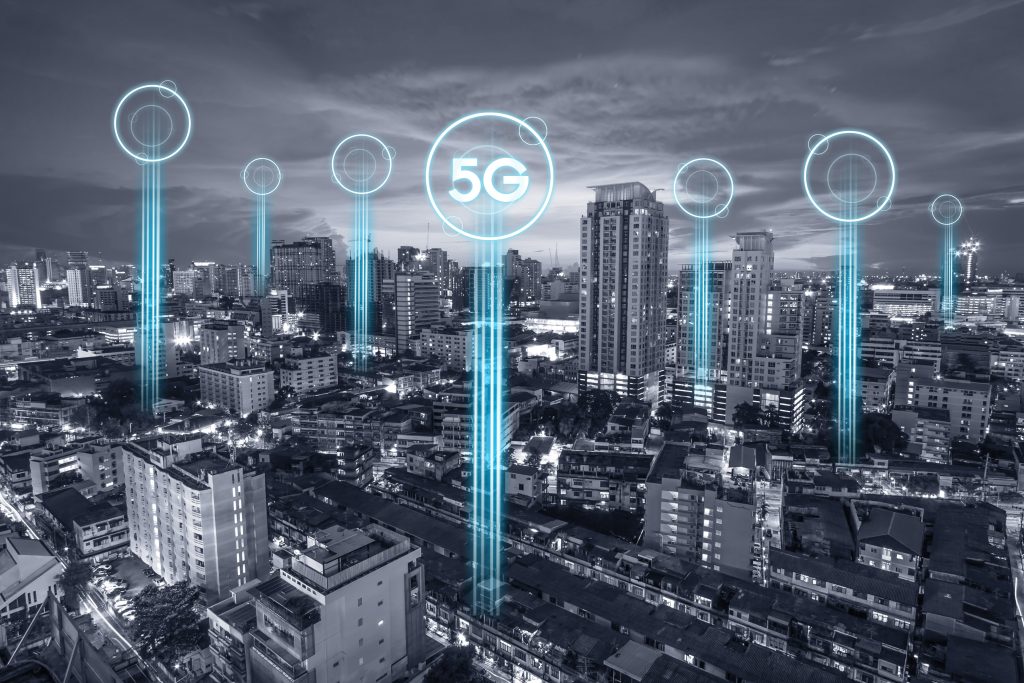5G Transformation: The power of good policy
From South Korea’s spectrum leadership to the EU’s harmonisation and Africa’s context-specific solutions, each of these approaches underscores the link between policies and 5G’s potential. These efforts are indispensable to foster optimal policies for future development.

The global rollout of 5G networks has been met with considerable excitement, and rightly so. While the promise of faster data speeds has captured much of the spotlight, the true transformational potential of 5G extends far beyond mere internet speed enhancements. Across continents, from the bustling metropolises of North America to the vibrant landscapes of Africa, a diverse array of strategies and approaches is shaping the future of 5G transformation connectivity. As policymakers grapple with the intricacies of crafting effective 5G spectrum policies, it’s essential to understand how these policies are intrinsically linked to achieving the wider benefits of this groundbreaking technology.
The spectrum: A valuable resource
At the heart of 5G technology is the radio spectrum, a finite and valuable resource allocated by governments to mobile network operators. These spectrum bands determine the speed, coverage, and reliability of wireless networks. In 2023, there’s a high demand for mid-band and the millimeter-wave spectrum, both essential for delivering the anticipated 5G transformation.

Policy imperatives to ensure low latency
Ultra-low latency is one of 5G’s defining features, enabling real-time communication and interaction over the internet. Policy decisions that prioritise and allocate specific spectrum bands for applications that require low latency, such as telemedicine and autonomous vehicles, can have a profound impact on their effectiveness and safety. Policymakers must prioritise the allocation of spectrum for latency-sensitive applications while also accommodating the growing data demands of traditional mobile services.
The US Federal Communications Commission (FCC) launched its 5G FAST Plan in 2018. This initiative facilitates the deployment of 5G infrastructure by streamlining regulations and accelerating spectrum availability. As part of the programme, the FCC conducted auctions for spectrum bands suitable for 5G, such as the 24 GHz and 28 GHz bands, to support high-frequency, low-latency applications.
The EU introduced the 5G Action Plan in 2016 as part of its broader Digital Single Market strategy. The plan emphasises cooperation among EU member states to create the conditions needed for 5G deployment, including favourable spectrum policies.
China launched its National 5G Strategy in 2019, outlining a comprehensive roadmap for 5G development. The strategy includes policies to allocate and optimise spectrum resources for 5G networks.The Independent Communications Authority of South Africa (ICASA) is actively exploring spectrum policies to accommodate 5G. ICASA has published draft regulations for the use of high-demand spectrum, including the 3.5 GHz and 2.6 GHz bands, which are crucial for 5G deployment. ICASA’s efforts to regulate spectrum have been praised by the Wi-Fi Alliance for their role in advancing Wi-Fi technology and connectivity in Africa. ICASA aims to amend radio frequency regulations to stimulate digital development, investment, and innovation in the telecom sector for public benefit.
Enabling massive Internet of Things connectivity
The International Telecommunication Union (ITU) has classified 5G mobile network services in three categories: Enhanced Mobile Broadband (eMBB), Ultra-reliable and Low-latency Communications (uRLLC), and Massive Machine Type Communications (mMTC).The mMTC service was created specifically to enable an enormous volume of small data packets to be collected from large numbers of devices simultaneously; this is the case with internet of things (IoT applications. mMTC classified 5G as the first network designed for Internet of Things from the ground up.

The IoT stands as a cornerstone of 5G transformation potential; 5G is expected to unleash a massive 5G IoT ecosystem where networks can serve the communication needs for billions of connected devices, with the appropriate trade-offs between speed, latency, and cost. However, this potential hinges on the availability of sufficient spectrum for the massive device connectivity that the IoT needs. The demands that the IoT places on cellular networks vary by application, often requiring remote device management. And as connectivity and speed (especially even very short network dropouts) are mission critical for remotely-operated devices, URLLC and 5G Massive MIMO radio access technologies offer key ingredients for effective IoT operations.
| Effective 5G spectrum policies must allocate dedicated bands for IoT devices while ensuring interference-free communication. Standards in Releases 14 and 15 of the Third Generation Partnership Project (3GPP) the solve most of the commercial bottlenecks to facilitate the vision of 5G and the huge IoT market. |
Diverse approaches to spectrum allocation
The USA’s spectrum allocation strategy is centered around auctions as its primary methodology. The FCC has been at the forefront of this approach, conducting auctions for various frequency bands. This auction-driven strategy allows network operators to bid for licenses, enabling them to gain access to specific frequency ranges. Notably, the focus has been on making the mid-band spectrum available, with a significant emphasis on cybersecurity.
Its proactive stance has marked South Korea’s approach to spectrum allocation. Among the pioneers in launching commercial 5G services, the South Korean government facilitated early spectrum auctions. As a result, they allocated critical frequency bands, such as 3.5 GHz and 28 GHz, for 5G deployment. This forward-looking strategy not only contributed to the rapid adoption of 5G within the nation, but also positioned South Korea as a global leader in the 5G revolution.
| The Korea Fair Trade Commission (KFTC), South Korea’s antitrust regulator, has fined three domestic mobile carriers a total of 33.6 billion won ($25.06 million) for exaggerating 5G speeds. [link] |
The EU champions spectrum harmonisation to enable seamless cross-border connectivity. The identification of the 26 GHz band for 5G in the Radio Spectrum Policy Group (RSPG) decision further supports the development of a coordinated approach. By aligning policies across member states, the EU aims to eliminate fragmentation and ensure a cohesive 5G experience.
Moreover, many African countries are in the process of identifying and allocating spectrum for 5G deployment. Governments and regulatory bodies have considered various frequency bands, such as the C-Band (around 3.5 GHz) and the millimeter-wave bands (above 24 GHz), for 5G services. Some African nations have issued trial licenses to telecommunications operators to conduct 5G trials and test deployments. Thesehelp operators understand the technical challenges and opportunities associated with 5G in the African context. For example, in South Africa, ICASA is developing a framework for 5G spectrum allocation. Their approach encompasses license conditions, coverage requirements, and the possibility of sharing spectrum resources.
Kenya is in the process of exploring opportunities to release additional spectrum to facilitate 5G deployment. The Communications Authority of Kenya is contemplating reallocating the 700 and 800 MHz bands for mobile broadband use, including 5G services.

A well-structured spectrum management framework serves as the guiding principle for equitable and efficient allocation of this resource. These frameworks include regulatory approaches like exclusive licensing, lightly-managed sharing, and license-exempt usage. Sharing frameworks enable coexistence, from simple co-primary sharing to multi-tiered arrangements. Static sharing uses techniques such as FDMA and CDMA, while Dynamic Spectrum Sharing (DSS) allows users to access spectrum as needed.
In conclusion, the intricate world of 5G spectrum policies profoundly shapes the path of 5G’s transformative journey. Beyond speed enhancements, global strategies spotlighted here reveal the interplay of technology and governance.
From South Korea’s spectrum leadership to the EU’s harmonisation and Africa’s context-specific solutions to challenges, each of these approaches underscores the link between policies and 5G’s potential. These efforts are indispensable to foster optimal policies for future development.
Today’s decisions will echo into the future, moulding 5G’s global impact. This intricate interweaving emphasises 5G’s capabilities and policy’s role in driving unprecedented connectivity, innovation, and societal change.



